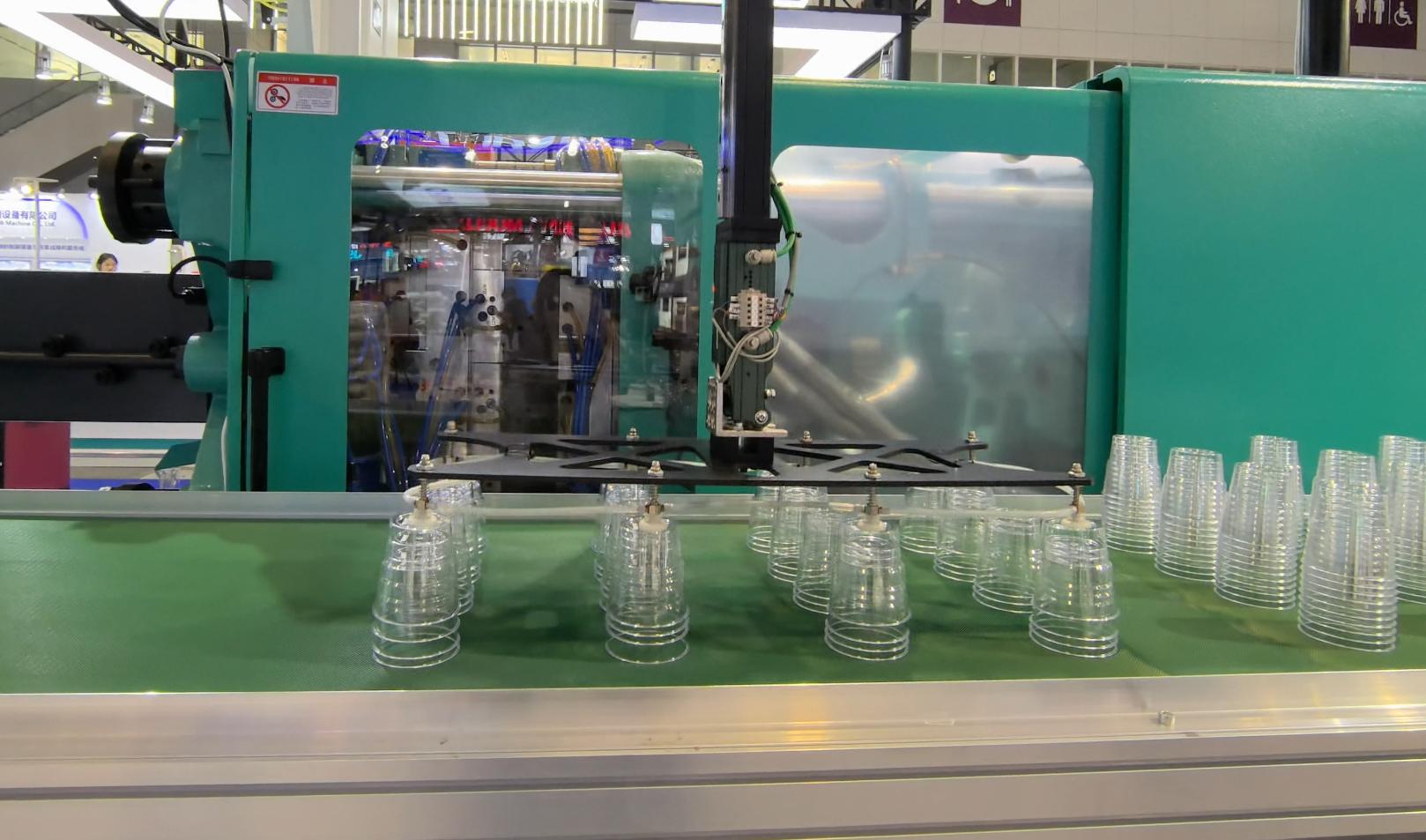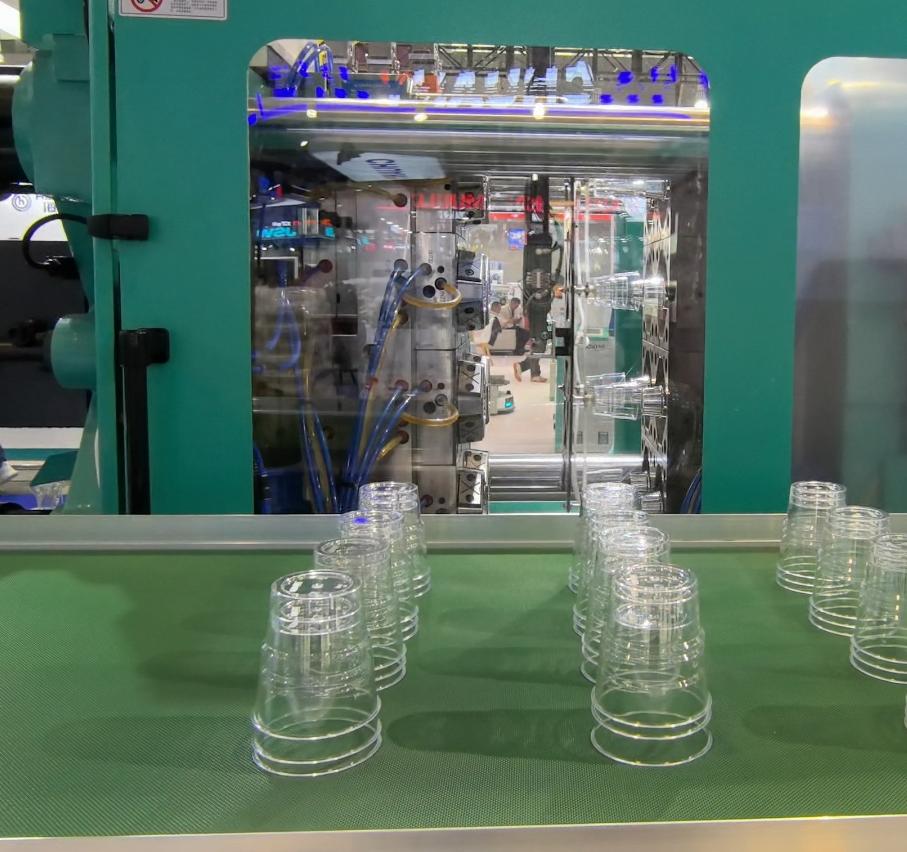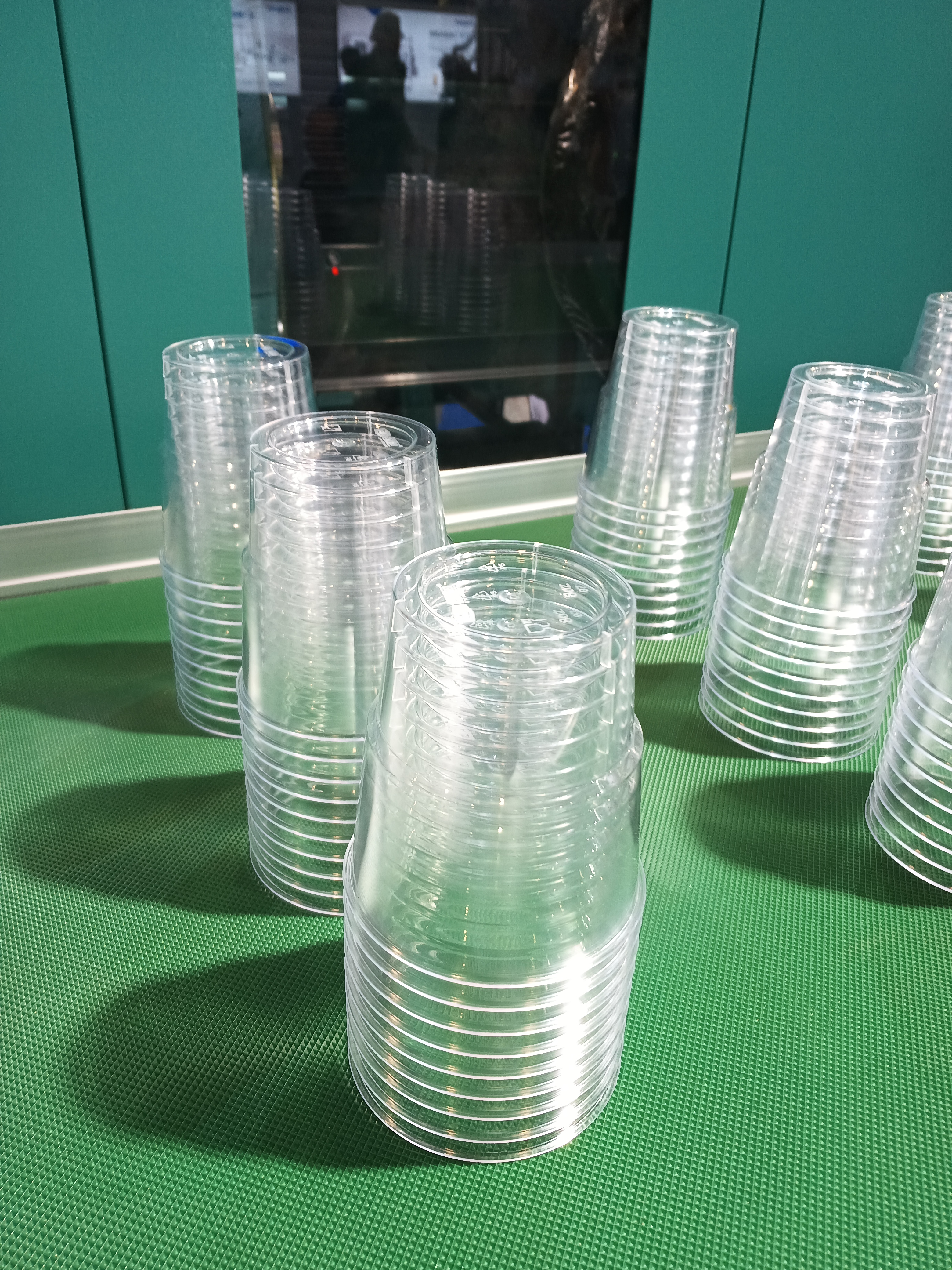Please Choose Your Language
- All
- Product Name
- Product Keyword
- Product Model
- Product Summary
- Product Description
- Multi Field Search


Views: 0 Author: Site Editor Publish Time: 2025-08-27 Origin: Site










The Fourth Step of The PS Disposable Plastic Cup Production Process
- Conveyor Belt
Placing a conveyor belt beside the injection molding machine is an essential strategy for enhancing automation throughout the manufacturing process. The integration of a conveyor belt not only streamlines operations but also significantly increases efficiency and productivity in the production line.

By installing a conveyor belt adjacent to the injection molding machine, manufacturers can create a more automated and seamless process. This setup allows for the immediate transfer of molded products from the machine to the designated collection area without the need for manual intervention.
When the conveyor belt is loaded, it remains stationary, ensuring that the products are securely held in place until they are ready to be transported. Once the molded items are complete and the belt is full, the conveyor system can automatically initiate movement, transporting the products efficiently to their next destination, such as packaging or quality control stations.

One of the significant advantages of this system is the adjustable height feature of the conveyor belt. This adaptability allows for easier operation, accommodating different types of injection molding machines and various production line layouts. Operators can customize the height of the conveyor to ensure ergonomic working conditions, minimizing the risk of strain or injury during material handling.
Additionally, a properly adjusted conveyor belt can help improve the speed at which products are processed, as it can be aligned with other machinery or workstations, reducing the need for excessive reaching or bending by operators.

Furthermore, the automated movement of the conveyor belt reduces the time spent on manual labor, allowing operators to focus on more complex and value-added tasks. This shift in focus can lead to better oversight of the molding process, enabling operators to detect and address potential issues more proactively.
Automation also contributes to consistency in product quality, as the risk of human error is significantly diminished. When products are handled automatically, the chances of damage during transport are reduced, ensuring that items are delivered to the next stage in optimal condition.

Additionally, the use of conveyor belts beside injection molding machines can facilitate better organization within the production area. A well-structured workflow minimizes clutter and ensures that materials are transported in an orderly fashion, reducing the likelihood of accidents or product mix-ups. Clear pathways for product movement also enhance safety for all personnel involved in the manufacturing process.

In conclusion, placing a conveyor belt beside the injection molding machine is a pivotal step toward achieving a more automated and efficient manufacturing process. The ability to automatically convey products while providing adjustable height for ergonomic operation contributes to improved productivity, reduced labor costs, and enhanced product quality.
As industries continue to seek ways to optimize their operations, the integration of conveyor systems will undoubtedly play a crucial role in shaping the future of manufacturing.